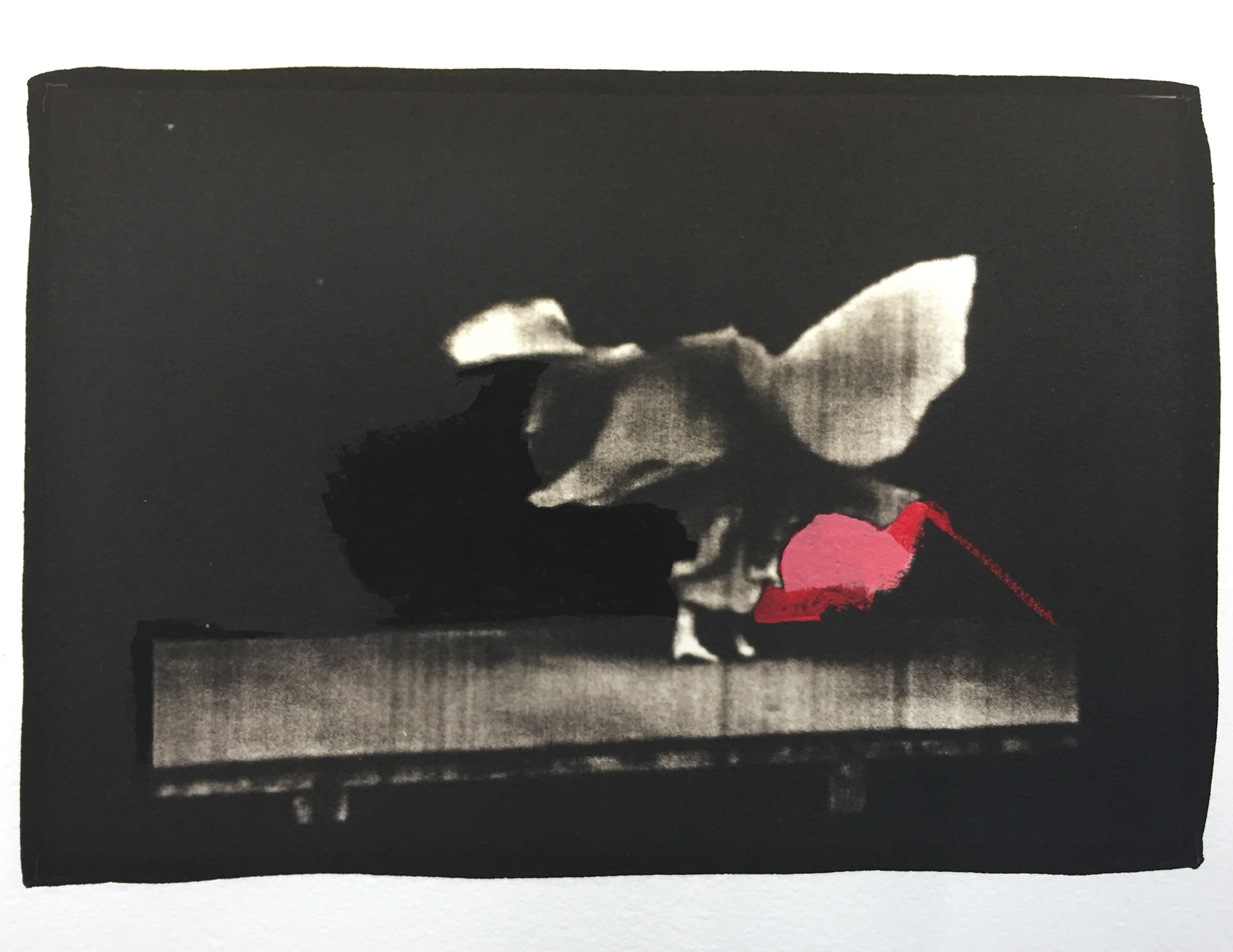Of Black Holes and Feminine Flesh
12 October 2016
By Kristina Fiedrich
A woman dances alone on a stage. The swathes of fabric bellowing and collapsing around her as she moves; spinning, swirling. From one moment to the next, the dancer’s body becomes engulfed by the folds of fabric, disappearing from view, while simultaneously expanding, transforming and breathing beyond her skin. Described by art critic Mallarmé as resembling giant petals, butterflies or a conch shell unfurling, (1) the dancer, suspended in place and time, is an apparition. Her body, disproportionate and malleable, is an abstraction of flesh and movement, taking up and traveling through space.
For most students of art history, this is a familiar film – the Lumière Brothers Danse Serpentine, c. 1896. Attributed to American modern dance pioneer and inventor Loïe Fuller, the serpentine dance was enhanced by Fuller’s patented garment, which allowed dancers to become subsumed almost entirely by the triangular shaped, light-weight material. (2) The garment, guided by the dancer’s body, expands the curvilinear lines of the feminine form, while also challenging the shape and proportions of what was considered a beautiful figure. As Rancière noted, this is a new body. (3)
Now, ahead by a century, Vancouver-based artist Andrea Taylor takes up the image of the serpentine dancer, exploring the varied embodied forms through photography, paintings, drawings, moving-image and sculptures in Voices of Unknown Origin (aka the Time Traveller). Deconstructing and decomposing the Lumière Brothers moving-image into over 200 stills, Taylor has returned the pulsing, swirling figure – once ethereal and gauzy – into an ongoing series of mysterious bodily/fleshy masses. Each still becomes an instant for another reality, another space, another body. Opaque, weighted and voluminous, the dancing figure begins to resemble botanical, floral and invertebrate shapes. The metamorphosis of the feminine form as it becomes a new, unknown body, full of potential.
The unknown, as a catalyst for making, is present in Taylor’s work. Through process and repetition, the spiraling dancing body is re-presented through a variety of media. A series of palladium prints delves into the archaeology of media, restoring an archaic process and fixing the body in space and time. Returning the moving image to a former technology, Taylor upends the hierarchy of technological systems, and produces, reproduces and transforms the image. Is the unknown more knowable through repetition? Will this body, this figure, this organic feminine form, come into focus?

By slowing down, or reversing the movement of the dancer, the artist is asking the viewer to consider another time, another moment – whether past, present or future. Time travel, as suggested by the title of the exhibition, becomes embedded in the work in a number of ways. We might consider the reappearance of the Lumière Brothers Danse Serpentine, and the dancer’s body, decade after decade, as a form of time travel. Or its transformation from moving image to YouTube video as an example of the deep time of media, (4) unearthed and catalogued. Or perhaps it is the artist herself who is truly the time traveler, tripping in and out of history as a means of reveling in and revealing the unknown.
The artist as natural time traveler might find herself, therefore, on the edge of a black hole. From such a position, according to Einstein’s theory of General Relativity, it would be possible to “witness an immensely long time span in the universe […] so far removed from the external time of the surrounding cosmos that she conceivably could witness thousands, millions, or billions of years elapse.” (5) From terrestrial, fleshly, floral forms to celestial bodies, the Danse Serpentine becomes the portal for the artist to peer through space and time. Analogy to a Blue Flame suggests just this edge of timeless possibility–the cut-out absent body of the dancer provides a black hole (negative space) through which to observe the endlessly looping fluttering movement that exists on a plane just beyond our present reach.
The strength and voluminousness of the transformed feminine form at once pays tribute to the innovation and inventiveness of modern dancer Loïe Fuller, while celebrating the body’s continuous, amorphous escape from the confines of its contours. Through this porous membrane, (6) the artist has only begun to express the exchange of shape and form, natural and ethereal, digital and analog, past and present, present and future.
- Jacques Rancière, “The Dance of Light,” in Aisthesis: Scenes from the Aesthetic Regime of Art, trans. Zakir Paul. (New York: Verso Books, 2013), 94.
- Marie Louise Fuller. “United States Patent: # – Garment for Dancers,” April 17 1894.
- Rancière, 96.
- Siegfried Zielinski, Deep Time of the Media: Toward and Archaeology of Hearing and Seeing by Technical Means. (Cambridge. Mass: MIT Press, 2006), 2.
- Joel Hunter, “Time Travel,” in The Internet Encyclopedia of Philosophy. Accessed September 20, 2016, http://www.iep.utm.edu/timetrav/
- Gilles Deleuze, “Athleticism,” in Francis Bacon: The Logic of Sensation, trans. Daniel W. Smith. (London, New York: Continuum, 2003), 12.
Voices of Unknown Origin (aka The Time Traveller), exhibition by Andrea Taylor. October 6-22, 2016 at Back Gallery Project, Vancouver, BC.
All images courtesy of Andrea Taylor.



